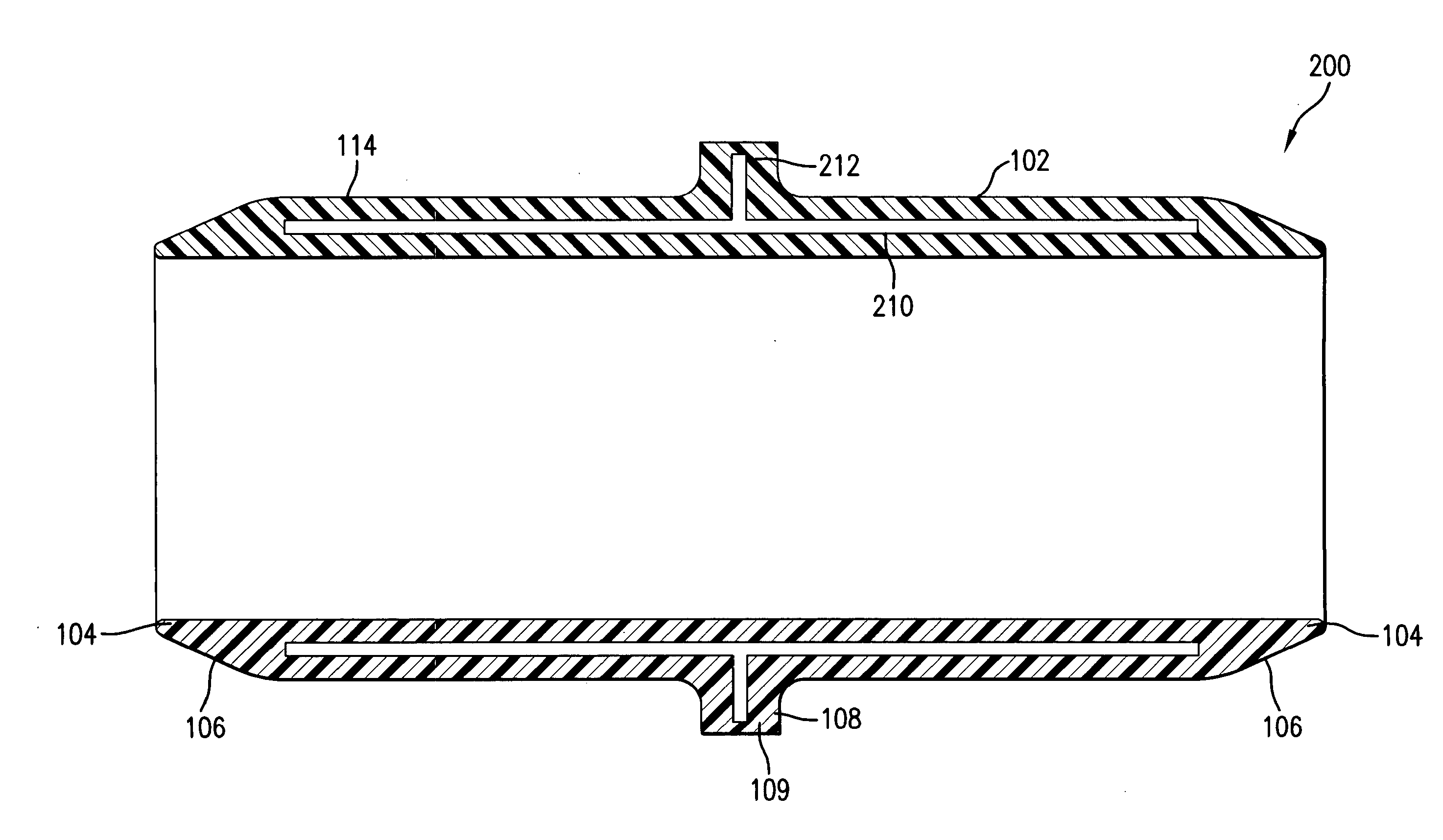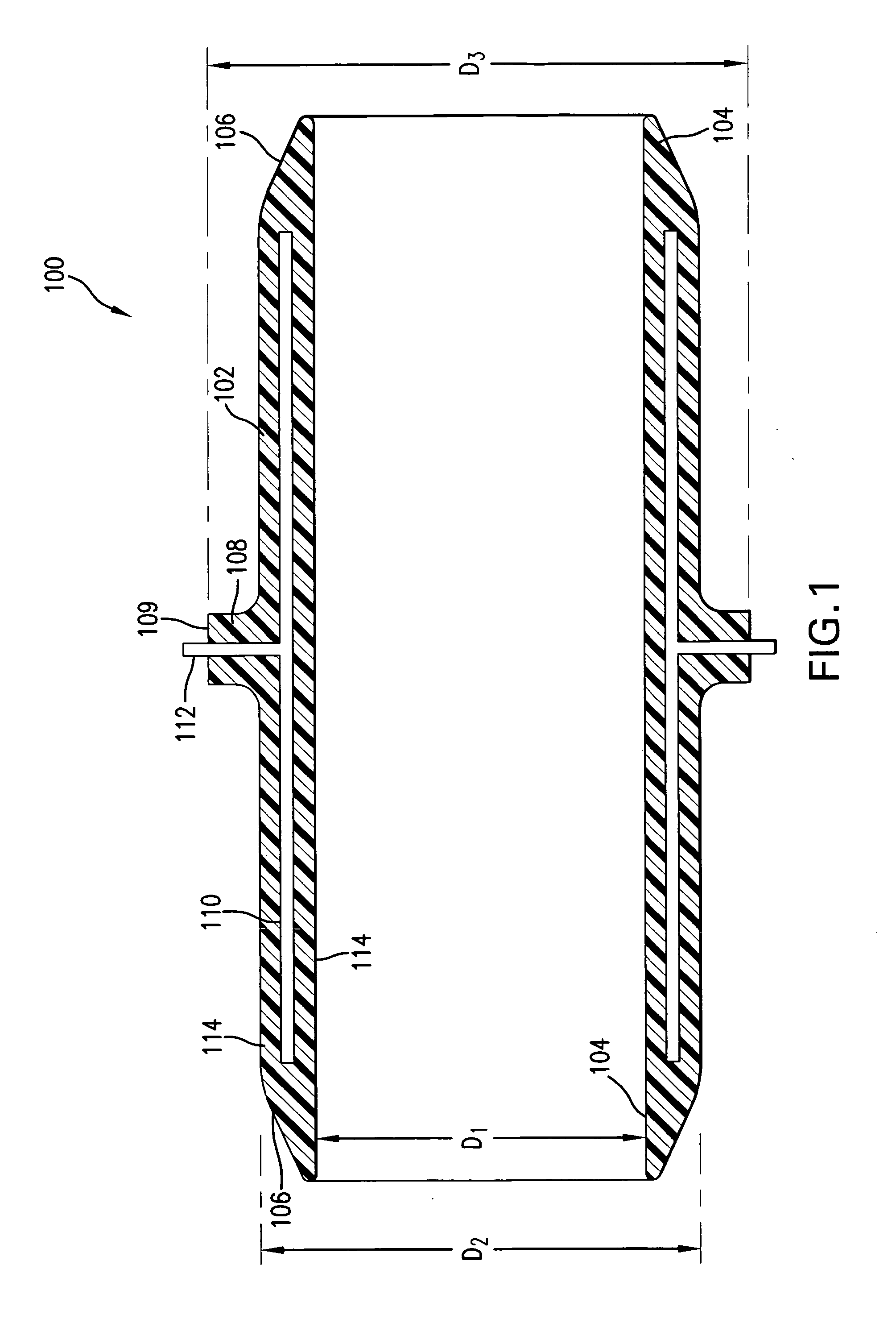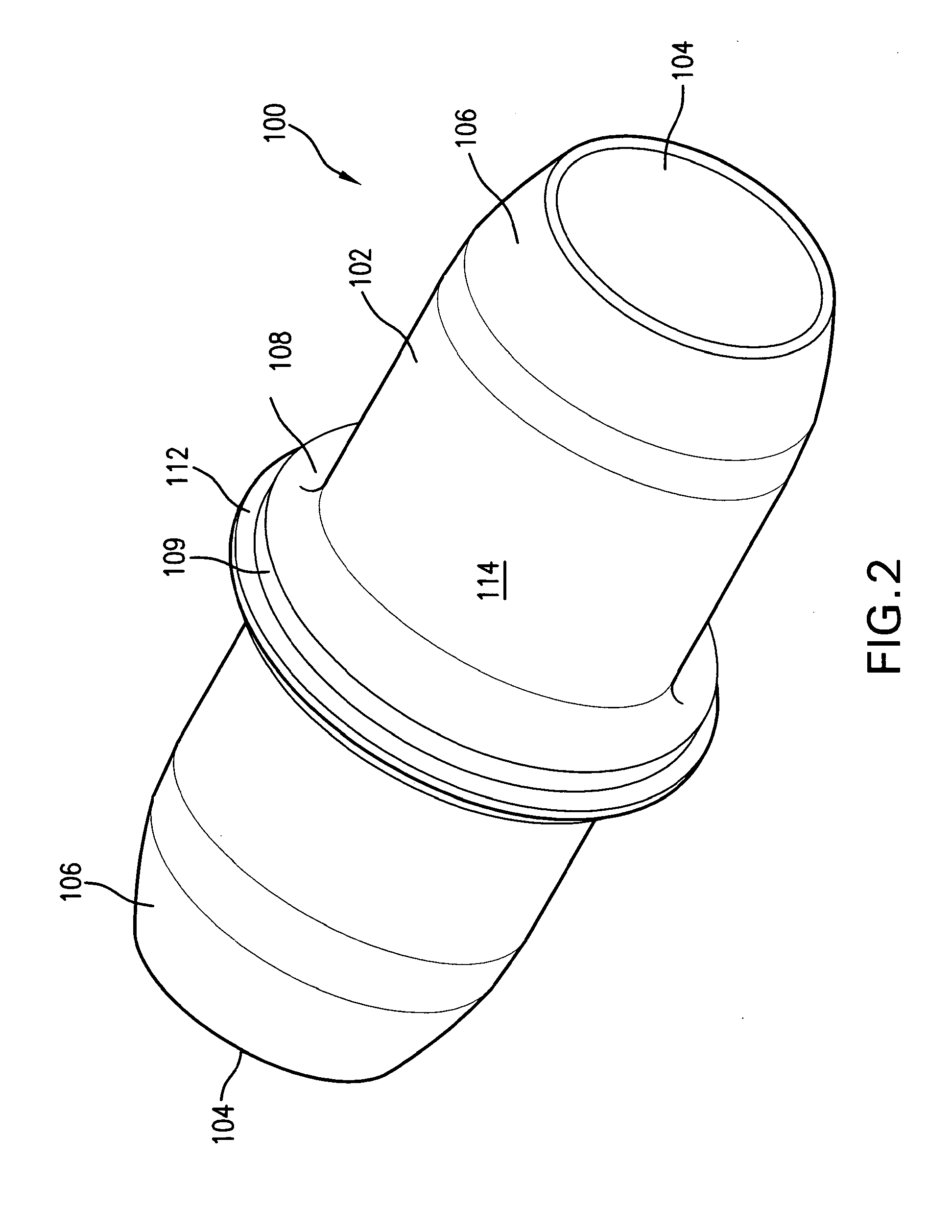Joint and joining method for plastic pipe
a multi-layer composite tubing and joining method technology, applied in the field of joining and joining methods of multi-layer composite tubing, can solve the problems of high capital cost of straight copper tubing and chlorinated polyvinyl chloride (cpvc), difficulty in bending pex and polybutylene tubing, and difficulty in preventing kinking and twisting in the tubing. , to achieve the effect of reducing the number of molded components
- Summary
- Abstract
- Description
- Claims
- Application Information
AI Technical Summary
Benefits of technology
Problems solved by technology
Method used
Image
Examples
embodiment 200
[0047]FIGS. 4-6 show another exemplary embodiment of a coupling 200 constructed in accordance with the present disclosure. The coupling 200 of FIGS. 4-6 is similar to the coupling 100 of FIGS. 1-3 such that similar elements are labeled with the same reference characters. In the embodiment 200 of FIGS. 4-6, however, a core 210 of the coupling 200 is provided with a radially extending portion 212 that extends into the flange 108 but does not extend out of the radial outer surface 109 of the flange 108.
[0048]The core 210 in this embodiment 200 is comprised of material that is magnetically permeable, i.e., ferromagnetic, so that the core can be heated by induction heating. Without being limited to any particular theory, induction heating uses an externally positioned electrical coil. To create heat by induction heating, current is circulated around an internally positioned ferromagnetic material, usually with the current being circulated at a very high frequency. The circulating current...
embodiment 300
[0050]Examples of ferromagnetic materials for the core 210 include carbon steel, iron, carbon, and carbon-reinforced thermoplastic materials. The carbon reinforced thermoplastic version might comprise a central tube material that is manufactured by winding and consolidating unidirectionally extruded thermoplastic tape (e.g., polypropylene, polyethylene, PVDF, etc.) that is reinforced with unidirectional carbon fibers extruded into the tape. Such construction would make the core 210 not only susceptible to being heated by induction heating from an external source, but it would also be exceptionally strong, i.e. stronger than even that of a solid metallic material, yet lightweight. The core 210 may or may not have a radially extending portion, as is illustrated in the embodiment 300 of FIGS. 7-8. In the exemplary embodiment of FIGS. 7-8, the coupling 300 also does not have a flange. Alternatively, the coupling 300 could have a flange extending from the body 102, but no radially extend...
PUM
| Property | Measurement | Unit |
|---|---|---|
| angle | aaaaa | aaaaa |
| angle | aaaaa | aaaaa |
| angle | aaaaa | aaaaa |
Abstract
Description
Claims
Application Information
 Login to View More
Login to View More - R&D
- Intellectual Property
- Life Sciences
- Materials
- Tech Scout
- Unparalleled Data Quality
- Higher Quality Content
- 60% Fewer Hallucinations
Browse by: Latest US Patents, China's latest patents, Technical Efficacy Thesaurus, Application Domain, Technology Topic, Popular Technical Reports.
© 2025 PatSnap. All rights reserved.Legal|Privacy policy|Modern Slavery Act Transparency Statement|Sitemap|About US| Contact US: help@patsnap.com



